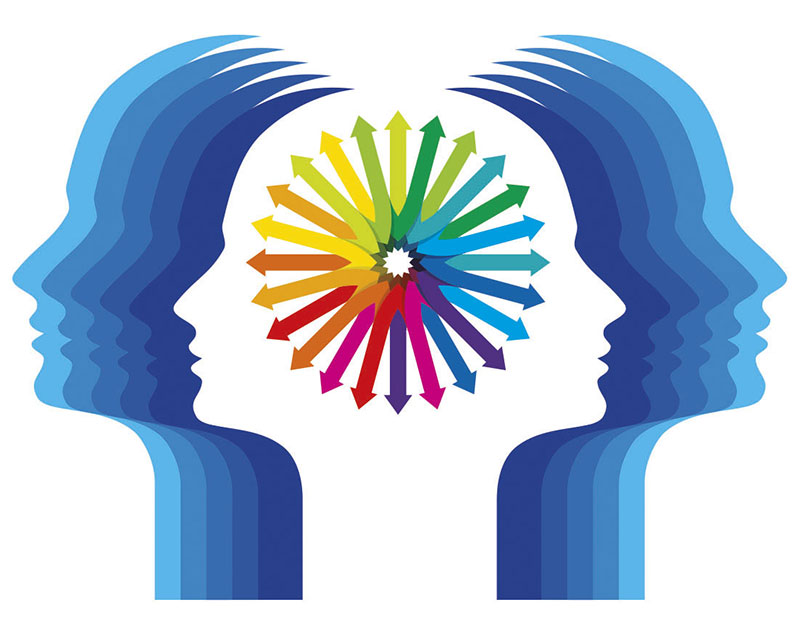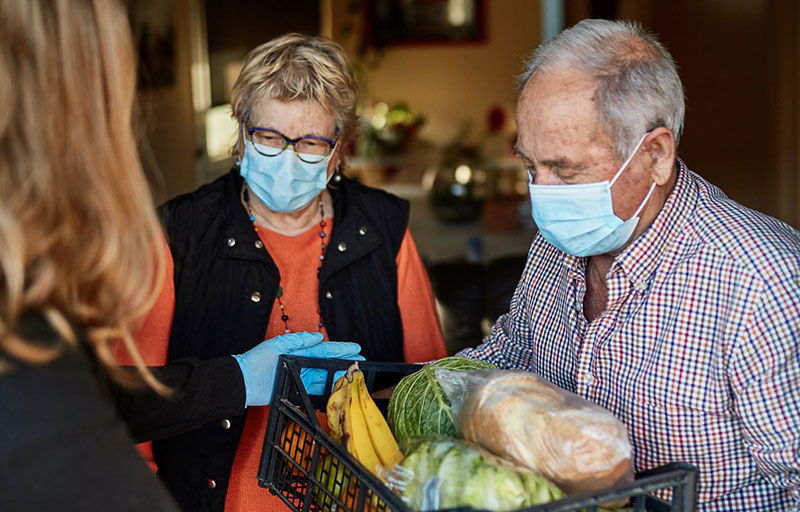 By Kelly Hochbein and Christine Fennessy
By Kelly Hochbein and Christine Fennessy
Our perceptions can shape our reality. It’s an idea that Paolo Bocchini finds fascinating, particularly when it comes to studying recovery after a natural disaster.
“If a hurricane destroys your factory, and you don’t believe that utilities will be restored quickly enough in your neighborhood, you may decide against rebuilding your factory in the same spot,” says Bocchini, an associate professor of civil and environmental engineering (CEE). “The same reasoning applies to infrastructure services. If the water department doesn’t think power will be restored to a certain area, it may avoid servicing that area altogether. So the perception of recovery can impact the actual recovery. But sometimes, these perceptions are wrong.”
Bocchini has long been using metrics of resilience to study and model the recovery of infrastructure systems after natural disasters like earthquakes and hurricanes. But he’d never considered the role of perception in regard to resilience and recovery within communities, nor how it could come into play if the disaster were a pandemic.
Bocchini is part of an interdisciplinary team within Lehigh’s Institute for Cyber Physical Infrastructure and Energy (I-CPIE) studying just that. The team includes Rossin College professors Brian Davison (computer science and engineering) and Richard Sause (CEE) as well as faculty and other researchers in three other colleges at Lehigh.
“Our desire was to establish a group led by social scientists who study perception,” says Bocchini. The initial plan was to investigate how perceptions of recovery among the general population compared with the actual recovery of communities in North Carolina that were hit by Hurricane Florence in 2018. But just before team members were set to travel to conduct interviews, COVID-19 upended the world.
“COVID made it impossible to do what we wanted to do about Hurricane Florence, but it gave us another disaster to study. In real time, we could observe the loss of functionality of many different systems, the perception around this loss, and the recovery,” he says.
|
Photo credit: IStock/XavierArnau; “Essential Thanks” (CC BY-NC-ND 2.0) by Russ Allison Loar (at top) |
The team wrote up a new proposal and secured more funding. Now, they’re conducting a longitudinal study of how people in the U.S. perceive, respond to, and recover from the impact of COVID-19. While the goal remains the same—to develop comprehensive, interdisciplinary ways to understand and assess community resilience—the unprecedented nature of the pandemic allows the team to examine not only how different groups perceive a pandemic but also how those perceptions influence behaviors and relate to resilience of critical sectors.
After developing surveys and interview questions, team members surveyed a sample of approximately 2,500 individuals in April and resampled them two weeks later, with short follow-ups continuing to take place every six to eight weeks. In-depth phone interviews with citizens and key decision-makers in Pennsylvania’s Lehigh Valley, as well as in counties in New Jersey and California, are also providing data. Questions focus on participants’ perceptions of their own resilience and mental health, the challenges they face, their infrastructure usage, and their perceptions of their state and local communities, including the perceived economic impact. The team will also collect objective data related to confirmed cases of COVID-19, mortality rates, infrastructure usage, economic activity, and other impacts.
The team plans to address sense-making by examining the schemas (outlines for thinking about situations that guide a response) that individuals bring to this pandemic. Schemas are informed by previously experienced events, such as a hurricane, a terrorist attack, or other public health crisis. The team will also investigate the communities with which individuals identify—national, local, religious, occupational—that can guide behavior. Researchers will then assess participants’ self-reported behavioral responses throughout the pandemic.
So far, the gathered data has been informative, particularly with regard to stress and anxiety, says Dominic Packer, a professor of psychology in Lehigh’s College of Arts and Sciences. “People who’ve lost their job or have less income because of COVID are obviously more stressed out,” he says. “Anyone who’s experienced disruptions—like having trouble getting health care, or parents managing kids at home—has more elevated stress.”
However, it seems that community identity can predict lower immediate stress or decreased stress over time.
“It’s this feeling that you live in a community where you’re connected to other people, that they’re supportive, that your community is coping fairly well,” he says. “That’s a strong predictor of less stress. It’s actually one of the strongest predictors we’re seeing in our data. It makes sense because in a disaster, you suddenly are bound to your community. You can’t really go anywhere else, all your outcomes are linked to factors like ‘Do my grocery stores have toilet paper?’ and ‘Is my hospital able to function?’”
|
Photo credit: IStock/NYCShooter (left); "COVID-19 Cautious Shopper" (CC BY-NC-ND 2.0) by Gilbert Mercier (center); IStock/SDI Productions |
Early data also indicates that individuals who focus on the local community rather than issues at a state, national, or global level experience less stress. “That was true even in the hardest-hit states,” says Packer, “I think because although things are terrible overall, in your local community, for most people ... neighbors are helping each other.”
Bocchini says the ultimate goal is to devise a way to measure what he calls the “lag” between perception and reality. In other words, to show the lag exists, and that it can be quantified. Such understanding will enhance the models depicting community resilience after a disaster.
“Understanding this lag can make a difference when you’re assessing decisions about how to allocate funding for a certain retrofit, what protocols should be prepared, or how many crews should be on standby in case of a coming hurricane. Or in this case, whether parents will send their kids back to college. All of these decisions rely on some predictive models, and the more accurate the predictive models are, the better these decisions will be,” he says.
Bocchini is particularly excited to see if the paradigm he’s used for more than a decade to assess recovery in infrastructure systems after a natural disaster can be applied to a range of negative events, from coral reef extinction to pandemics.
“We have standardized, quantitative measures of resilience for services after natural disasters,” he says. “The same concept could work for pandemics.”
Bocchini and his team are taking advantage of the unusual vantage point the virus has given them—an abundance of time to study its ripple effects on our critical services.
“If we have good models of the kinds of impacts made by a pandemic and the evolution of those impacts, it will allow decision-makers to invest in mitigation and preparedness. So if it happens again, we’ll be more prepared to face it.”



